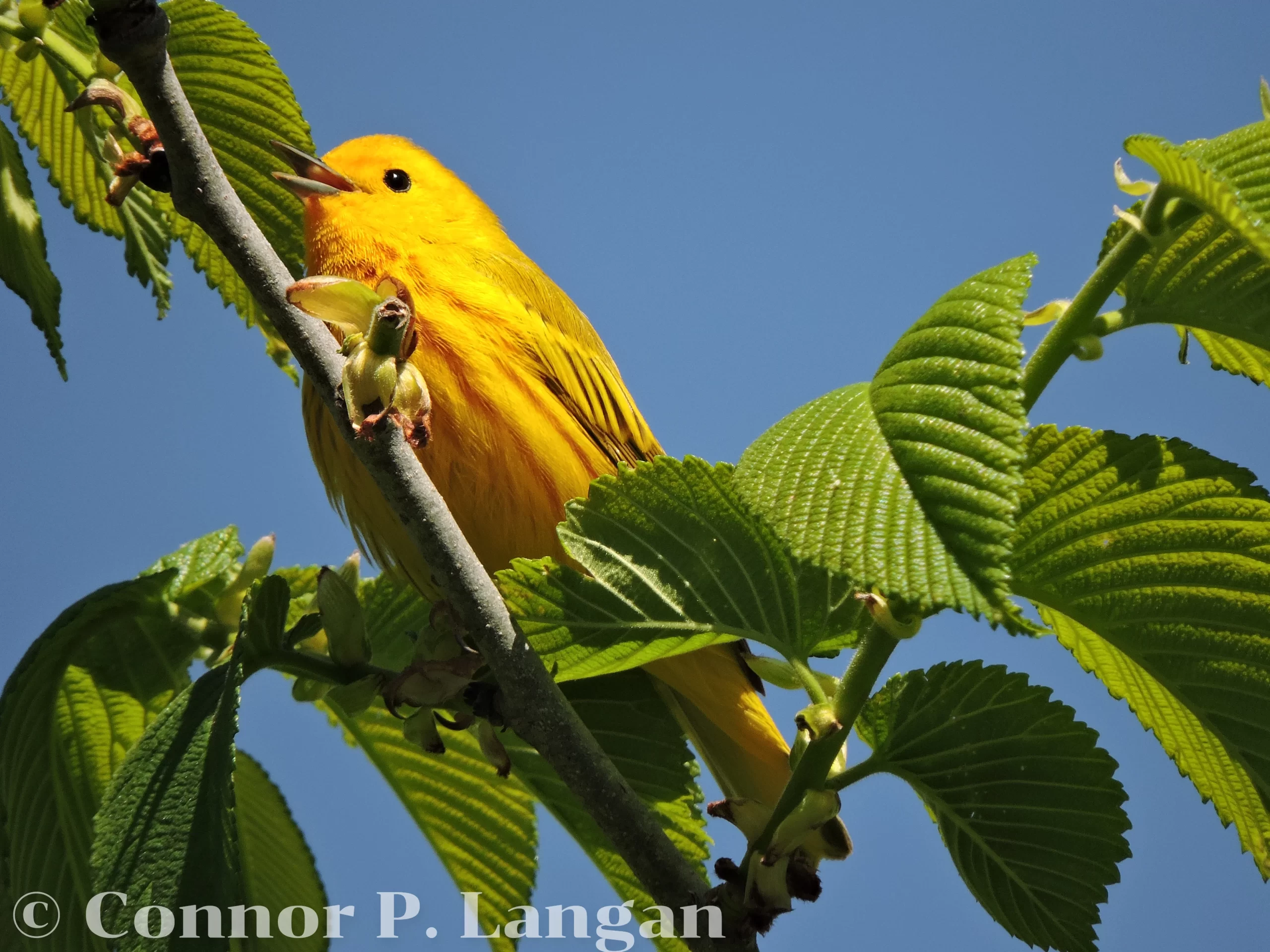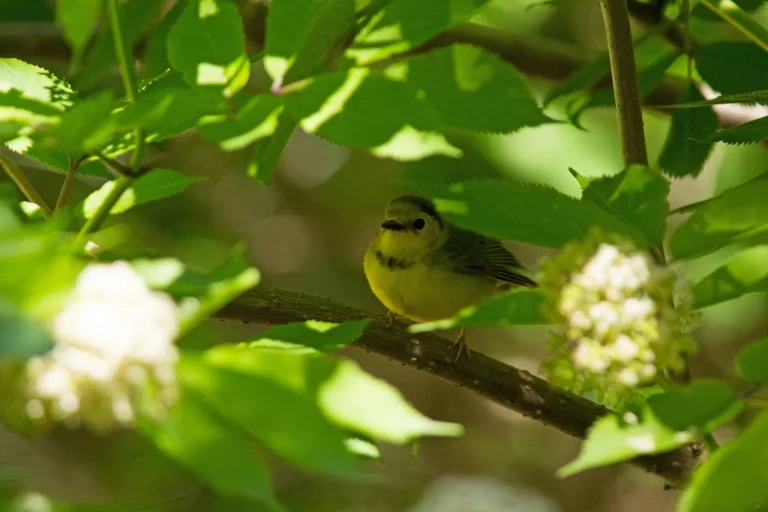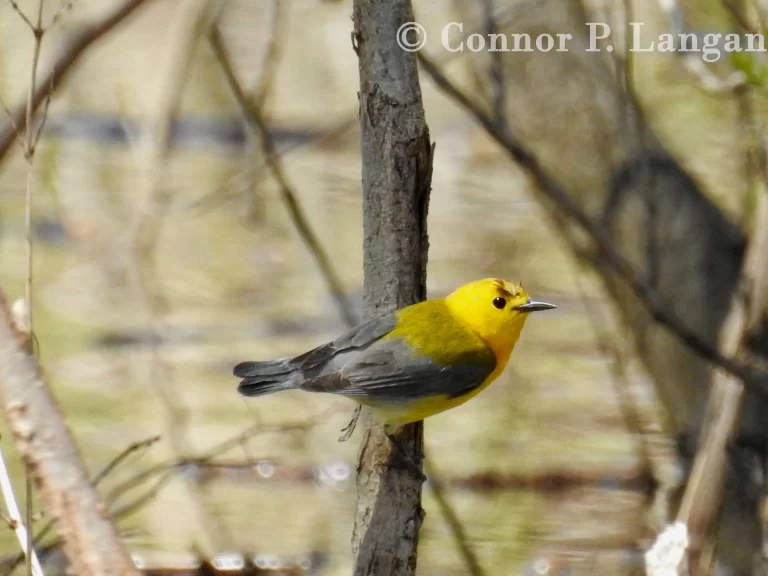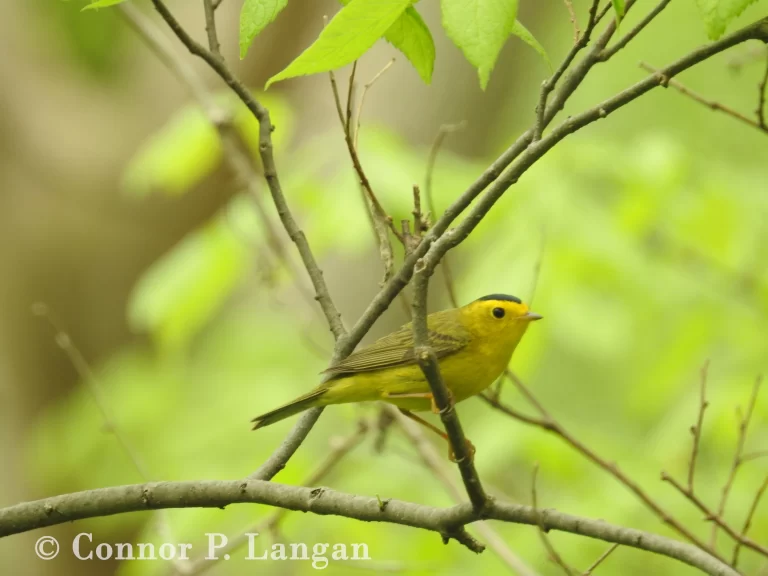Description
Yellow Warblers have thin, straight beaks that are fairly large for a warbler. These birds have medium-length tails, rounded heads, and beady black eyes on a plain face.
Yellow Warblers are anywhere from 4.75 to just over 5 inches long. These birds have an average weight of 10 grams or about the weight of two United States nickels.
Male Yellow Warblers are a stunning shade of bright yellow on their undersides with greenish backs. Males have chestnut-colored streaks on their breasts.
Female Yellow Warblers have unstreaked dull yellow underparts with green backs.
Immature birds are a pale yellow color overall. These warblers may even appear to be closer to a gray color.
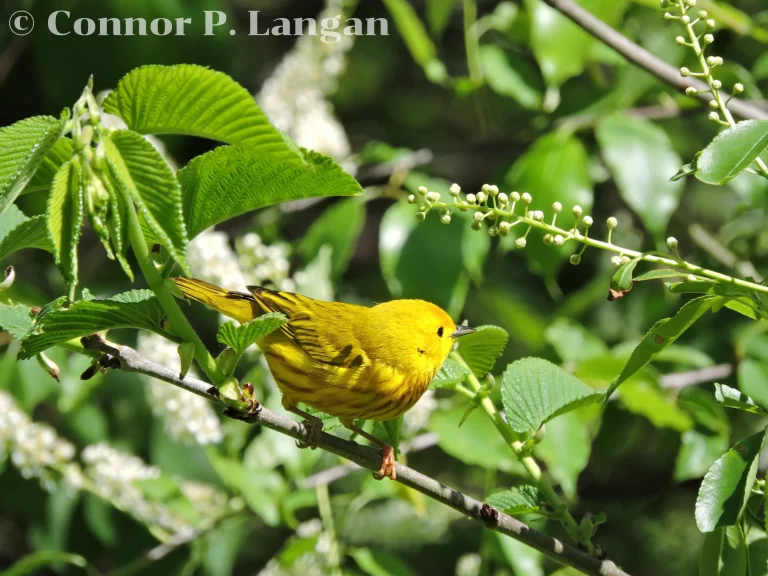
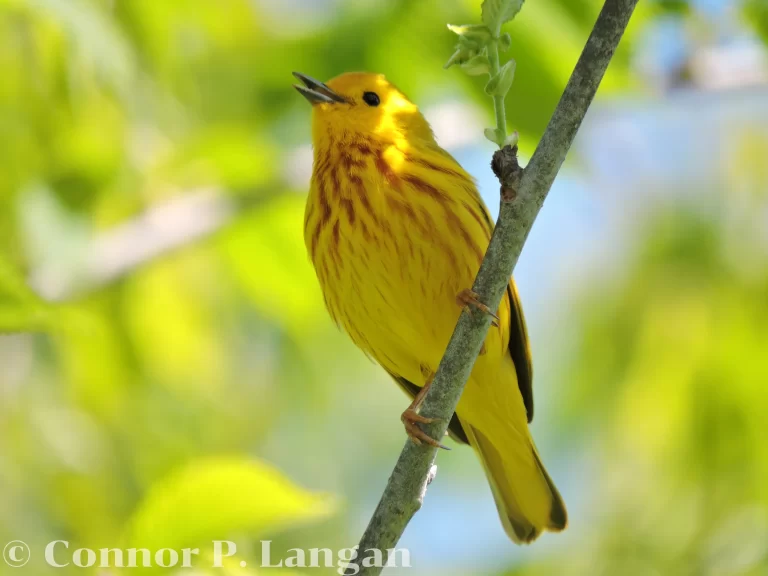
Behavior
Though tiny, Yellow Warblers will aggressively defend their territory from other birds, as they are known to chase off intruders on both their breeding grounds and wintering grounds.
Yellow Warblers do not tend to group up with others of their species except for their mate during the breeding season. Once young of the season birds are independent, Yellow Warblers tend to be solitary birds until the following breeding season.
Yellow Warblers are fairly accepting of human presence. Singing males are particularly approachable.
Diet
This species almost exclusively consumes insects. Yellow Warblers enjoy eating caterpillars, wasps, flying ants, and other insects that can be found in trees and shrubs.
Habitat
Yellow Warblers thrive in open, scrubby areas, thickets, marshes, and woodland edges. This species is quite adaptable as far as warblers go, as it can survive in areas with minimal trees and shrubs.
On their wintering grounds, Yellow Warblers live in forests, mangroves, wetlands, and fruit or coffee plantations.
Range
Yellow Warblers have an enormous breeding range, as their summer range extends from south-central Mexico all the way up to the Arctic tundra. These birds are one of the most northerly breeding warblers.
Yellow Warblers breed in all Canadian provinces and most of the lower 48 states, though they are absent from most of Texas and the Southeast during the summer.
In the winter, Yellow Warblers migrate to Central and South America.
Breeding
Yellow Warblers have a monogamous breeding system. Birds may mate with the same individual for multiple years, but they also may choose a new mate each year.
It takes a female Yellow Warbler around 4 days to construct her cup-shaped nest in the fork of a shrub or small tree. She uses bark, grass, and lichens to construct the nest, while she reinforces the structure with spider webs and plant fibers. The interior of the nest is lined with soft materials such as fur, feathers, and plant down.
Yellow Warblers lay at least one brood of eggs each year, but some birds may have two broods in a year. One to seven eggs are laid in each brood. It takes as few as ten days and as many as 14 days for the eggs to hatch. Nestlings leave the nest around 10 days later.
Backyard Birding
Because of their strict insect diet, Yellow Warblers will not visit bird feeders. Additionally, Yellow Warblers are not cavity nesters, so they will not construct a nest in birdhouses.
Yellow Warblers may visit bird baths in a backyard. If you have a good assortment of shrubs and small trees, Yellow Warblers may breed in your yard.
Population Status
There are 35 Yellow Warbler subspecies, some of which are considered to be threatened populations of birds. As a whole, Yellow Warbler populations are stable, with around 100 million birds existing. Despite this large number, Yellow Warbler populations have been slowly and gradually declining over the last few decades.

